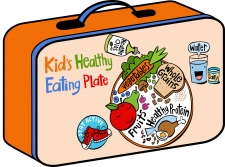In terms of culinary life, tater tots are still very young. Making their debut in cafeteria trays in American schools just under 70 years ago, the dish is simple - it’s potatoes. Or, maybe you prefer to call tater tots the UN-fries of American cuisine. Regardless of what you call them, or how you feel about them, they’re making a move into the spotlight lately - especially in burger joints where they are fast-approaching the simple french fry as the potato dish of choice to accompany burgers.
If you enjoy the McDonald’s signature burger, and you also enjoy spicy Sriracha sauce, this post will be of interest to you. If you also just enjoy reading about new and interesting ways big QSR brands are doing to stay relevant, keep reading as well.
The global burger chain announced recently that it is testing a Sriracha Big Mac burger menu item in the USA. The test is only taking place in one city as of right now - Columbus Ohio. The city has been a popular test location for other “Mac” products that are set to be introduced nation-wide in 2017.
Would You Like Yoga With That? How QSR’s Are Using Yoga To Attract a New Crowd
Author: admin /Since the early days of the first fast-casual restaurants, health has been a priority. Not always the number one priority, but a priority nonetheless. As time has moved on and lifestyles have evolved to place an even greater importance of health into everyday living, QSRs have followed suit by doing their part to offer support.
And sometimes, they offer yoga. Yes, yoga.
QSR chains across the U.S. are doing what they can to attract yoga enthusiasts to their brand. This is ranging from hosting yoga classes in their locations to sponsoring yoga festivals that attract hundreds, even thousands, of participants.
Convenient Competition: Convenience Stores Make Their Mark in America
Author: admin /Just a couple of generations ago, the convenience store was just that - a place of convenience. You paid for your gas there, maybe you picked up some overpriced milk, a newspaper and some sub-par coffee to keep you going.
Even just a generation ago, convenience stores hadn’t changed much. Along with your milk, maybe you grabbed some bread and ice cream. The sub-par coffee was maybe (maybe) on-par, but just barely.
Today’s convenience stores aren’t just keeping up in terms of convenience, they’ve come so far that they actually deserve a new name as they dig deep to grab a chunk of the premium food market share from some pretty big names.
When it comes to raising the level of quality of your ingredients, it ultimately increases the cost of those ingredients as well. And while many QSRs and fast-casual restaurants do their best to not pass those costs along to customers, it can be difficult to strike a balance between quality and increasing cost of doing business at a higher level.
At a minimum, restaurants that choose higher-quality ingredients (fresh produce, animals raised without antibiotics, etc) can expect a two percent increase in their food costs.
Associated with this cost is something that many people don't often think about - the cost of food safety training for the proper handling of higher quality (and fresher) foods. The cost of this kind of training can be high - and with a generally high turnover rate in the QSR-fast casual industry, brands are looking at a lot of money spent on food - and training on how to properly handle that food.













